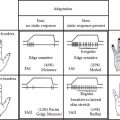Prevalence of Sensitive Skin by Ethnicity

TABLE 14.2
Prevalence of Sensitive Skin by Ethnicity in Terms of Climatic and Environmental Factors

TABLE 14.3
Prevalence of Sensitive Skin by Ethnicity in Terms of Emotion

We found variations of prevalence according to different countries by using the same methodology for all these studies (6–13) (see Chapter 2) that could suggest that some variations could depend on ethnicity.
This is definitely a little quick shortcut if not foolhardy! These different factors are rather cultural, linguistic, climatic, industrial, and related to the level of pollution or lifestyle.
In any case, research is limited in these countries by the law, especially in France, which forbids to question a person about its skin or its ethnic group.*
We also performed a study in the United States (9) on a representative sample of the population (14), including ethnic groups.
With the help of an international polling institute (Paris, France), 1000 individuals from a national sample representative of the American population aged at least 18 years old were selected according to the quota method (sex, age, ethnic group, profession, area of living) (14) and interviewed via phone. There were 70% who declared themselves as “Caucasians”; 12%, “Blacks”; 13.5%, “Hispanics”; and 3%, “Asians.”
The prevalence of sensitive skin was similar in the four ethnic groups; it varied slightly from 43.2% for Caucasian to 52.1% for African American individuals, 46.6% for Hispanic, and 44.4% for Asian without statistical significance (P = .352) (Table 14.1).
Likewise, no statistical difference was noted in terms of skin sensitivity to climatic and environmental factors among the different ethnic groups (Table 14.2). Skin reactivity to emotion was not significantly different in the four ethnic groups (Table 14.3).
Hence, we can conclude that there is no relationship of skin sensitivity and ethnicity. This is not surprising because the definition of these groups is not supported by scientific data and because there is no reason for differences in neuronal sensitivity according to these groups.
REFERENCES
1. Bryc K, Auton A, Nelson MR, Oksenberg JR, Hauser SL, Williams S, Froment A et al. Genome-wide patterns of population structure and admixture in West Africans and African Americans. Proc Natl Acad Sci USA 2010; 107: 786–791.
2. Verma SB. Proposing the demise of the terms “Asian skin” and “Asian skin type.” Int J Dermatol 2015; 54: e48–e49.
3. Jourdrain R, de Lacharrière O, Bastien P, Maibach HI. Ethnic variations in self-perceived sensitive skin: Epidemiological survey. Contact Dermat 2002; 46: 162–169.
4. Jourdrain R, Maibach HI, Bastien P, de Lacharrière O, Breton L. Ethnic variations in facial skin neurosensitivity assessed by capsaicin detection thresholds. Contact Dermat 2009; 61: 325–331.
5. Farage MA. Perceptions of sensitive skin: Changes in perceived severity and associations with environmental causes. Contact Dermat 2008; 59: 226–232.
6. Misery L, Myon E, Martin N, Verrière F, Nocera T, Taïeb C. Sensitive skin in France: An epidemiological approach. Ann Dermatol Venereol 2005; 132: 425–972.
7. Misery L, Boussetta S, Nocera T, Perez-Cullell N, Taïeb C. Sensitive skin in Europe. J Eur Acad Dermatol Venereol 2009; 23: 376–381.
8. Misery L, Myon E, Martin N, Consoli S, Boussetta S, Nocera T, Taïeb C. Sensitive skin: Psychological effects and seasonal changes. J Eur Acad Dermatol Venereol 2007; 21: 620–628.
9. Misery L, Sibaud V, Taïeb C. Sensitive skin in the American population: Prevalence, clinical data and role of the dermatologist. Int J Dermatol 2011; 50: 961–967.
10. Kamide R, Misery L, Perez-Cullell N, Sibaud V, Taïeb C. Sensitive skin evaluation in the Japanese population. J Dermatol 2013; 40: 177–181.
11. Taïeb C, Auges M, Georgescu V, Perez-Cullell N, Misery L. Sensitive skin in Brazil and Russia: An epidemiological and comparative approach. Eur J Dermatol 2014; 24: 372–376.
12. Brenaut E, Misery L, Taïeb C, Sheth R. Sensitive skin in India: An epidemiological and comparative approach. In press.
13. Misery L, Taïeb C. Sensitive Skin in Korea: An Epidemiological and Comparative Approach. San Francisco: American Academy of Dermatology. 2015.
14. Hansen MH, Hurwitz WN, Madow WG. Sample Survey Methods and Theory. Volume 1: Methods and Applications. New York: John Wiley & Sons, Inc. 1993.
* Article 8 of the Data Protection Act 1978 prohibits freedom “to collect or process personal data that reveals, directly or indirectly, the racial or ethnic origin.”




